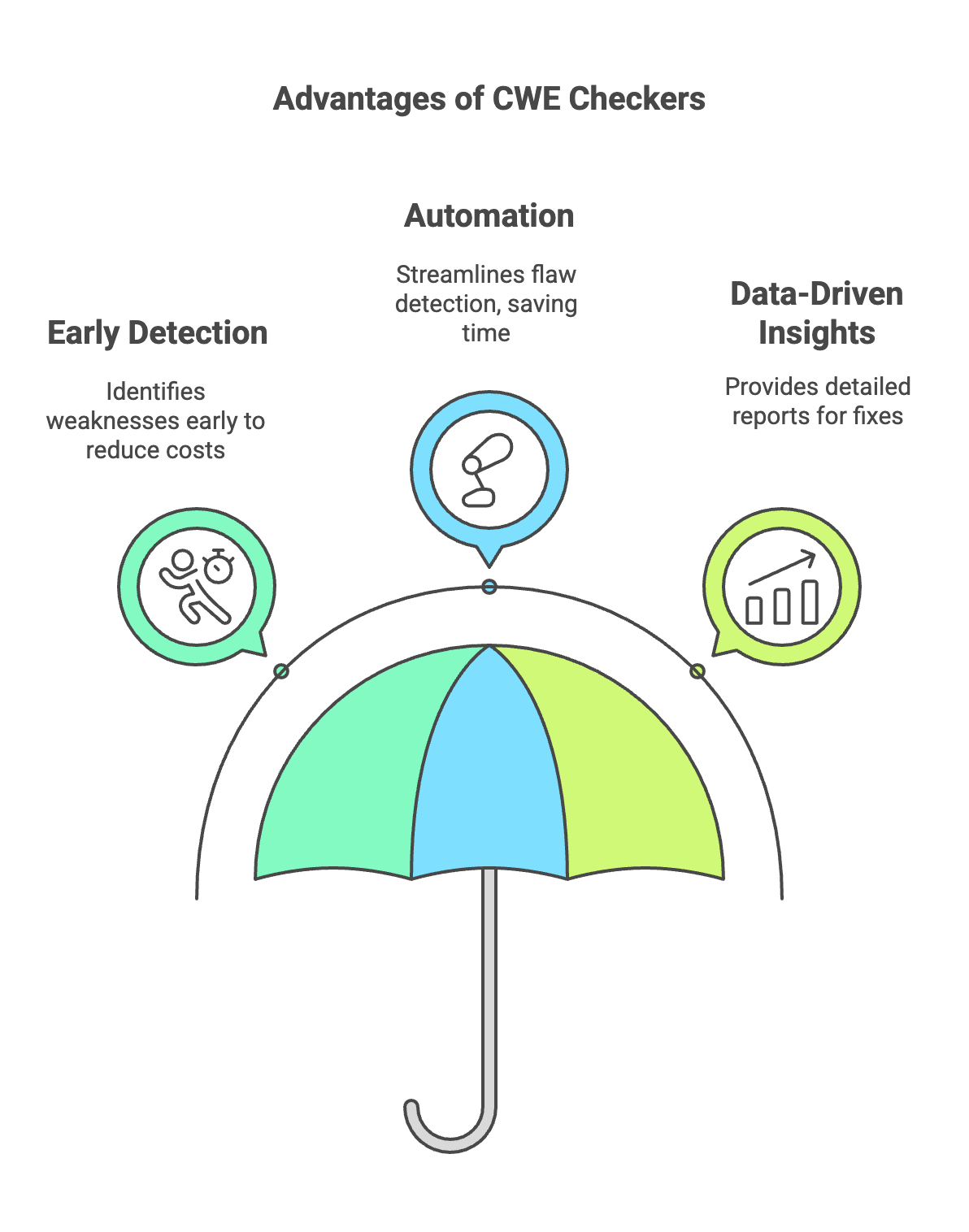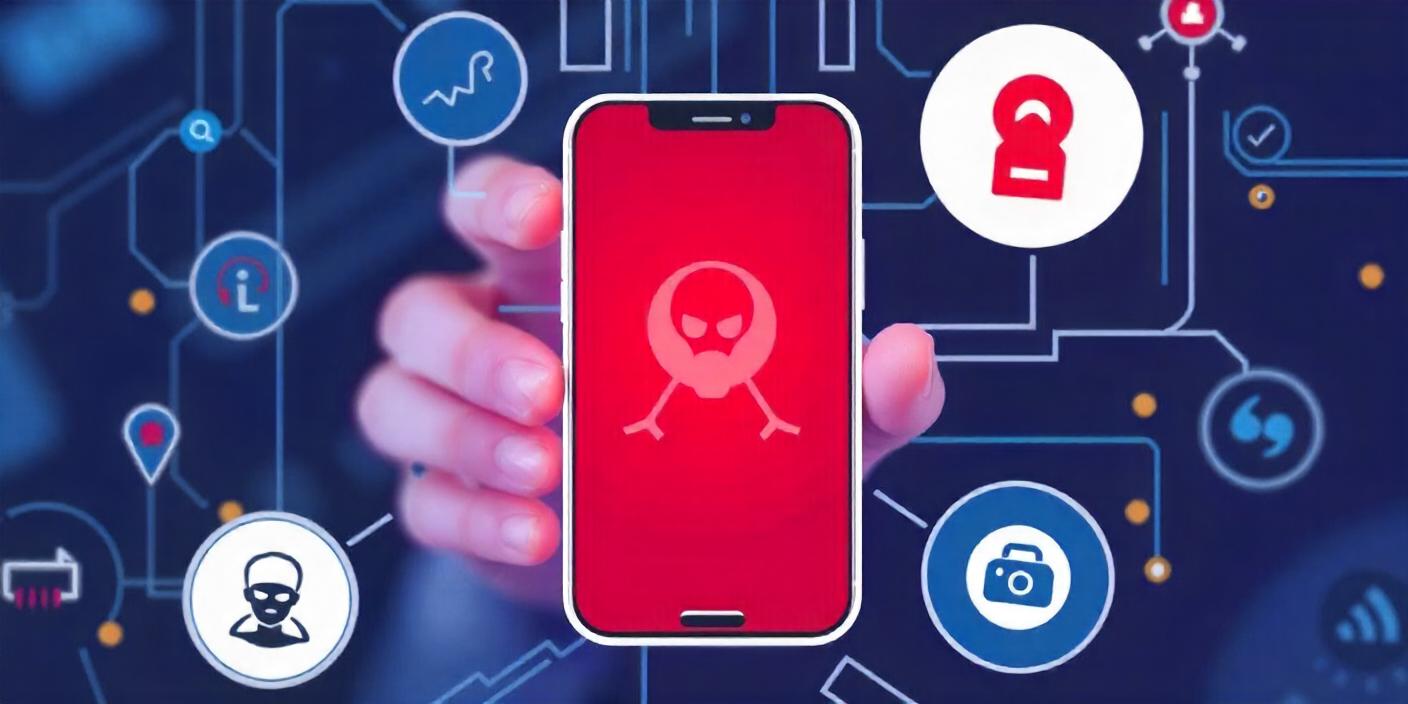DerScanner > Blog > Common Weakness Enumeration Checker: CWE Scanner

Dan Chernov, DerScanner
Common Weakness Enumeration (CWE) Checker
Protecting user data. Preventing security breaches. Strengthening application resilience. These are just some of the pressing concerns in software development today. With cyber threats constantly evolving, secure coding practices have become a necessity rather than a luxury.
Enter Common Weakness Enumeration (CWE)—a standardized resource that empowers software developers and security professionals to identify, understand, and address software vulnerabilities.
But what exactly is CWE? And how can tools like a CWE checker streamline secure coding and safeguard your software's integrity?
This guide dives into why leveraging CWE in your development practices is essential, the key weaknesses it addresses, and how it complements other cybersecurity frameworks. Most importantly, you'll learn actionable steps to integrate CWE into your workflow for safer, more robust software.
What is Common Weakness Enumeration (CWE)?
When it comes to secure software development, one of the biggest challenges developers face is prioritizing vulnerabilities. Security tools often generate overwhelming volumes of results, leaving teams struggling to determine what to address first, how to fix issues, and even where to start. This is where Common Weakness Enumeration (CWE) classifications become invaluable.
CWE provides a universal language for describing vulnerabilities. Imagine a vulnerability flagged as CWE-22 on one side of the world, and on the other side, developers immediately understanding the same problem without explanation. This shared understanding can simplify communication and streamline prioritization. By leveraging CWE classifications, development teams can tackle vulnerabilities in a systematic, effective way, focusing on the most significant issues first.
At its core, CWE is a repository of standardized coding flaws maintained by The MITRE Corporation. Supported by the U.S. Department of Homeland Security (DHS) and the Cybersecurity and Infrastructure Security Agency (CISA), CWE helps organizations worldwide understand and mitigate these software weaknesses.
The goal is simple yet profound: build more secure software. Whether you're dealing with buffer overflows, improper input validation, or other vulnerabilities, CWE offers a roadmap to identifying and addressing these risks.
Think of CWE as a library catalog of coding flaws—housing critical knowledge for developers and cybersecurity experts to ensure secure, high-quality applications.
How Does a CWE Checker Help Secure Code?
A CWE Checker is an automated tool that scans your code for weaknesses listed in the CWE library. These tools are designed to identify vulnerabilities during development, helping developers address issues before they become risks in production.
Key Benefits of Using a CWE Checker:

- Early Detection: Identify weaknesses during the Software Development Life Cycle (SDLC) to lower remediation costs.
- Automation: Streamline the process of finding coding flaws, saving time compared to manual reviews.
- Data-Driven Insights: Receive tailored reports with detailed insights into vulnerabilities and how to fix them.
Practical Use Case
Imagine you're developing a web application. Your CWE checker flags a potential CWE 22 (Path Traversal) vulnerability. Without it, this issue could allow attackers to exploit your file system—a critical flaw that might compromise sensitive customer data. Addressing it early means fewer headaches later.
Prioritization Simplified with the CWE Top 25
The CWE Top 25 list is a trusted resource for prioritization, summarizing the most critical developer errors each year. This list is updated annually, providing insight into the vulnerabilities that are most prevalent at a given time.
For example, SQL injection was once the most common vulnerability, holding the number one position. Today, it ranks lower, such as third place, thanks to developers learning better practices like data sanitization and parameterized queries. This shift reflects the industry's progress in secure coding and highlights areas where we still need to improve. By referencing the CWE Top 25, teams can not only identify high-priority weaknesses but also track trends and build defenses against emerging issues.
Top 3 Common Weaknesses in the CWE List
Addressing weaknesses proactively begins with knowing the most frequent offenders. Here's a quick look at three common CWEs and how to combat them:
1. Buffer Overflow (CWE 120)
Risk: May enable hackers to execute arbitrary code or crash your application.
Solution: Validate input lengths and use programming languages with built-in memory safety (e.g., Python over C).
2. Cross-Site Scripting (XSS) (CWE 79)
Risk: Allows attackers to inject scripts into web pages that are then executed by users’ browsers.
Solution: Sanitize all inputs and encode outputs in web application development.
3. Improper Input Validation (CWE 20)
Risk: Accepted invalid inputs can lead to vulnerabilities like SQL injection or broken authentication.
Solution: Use strict input rules and frameworks that enforce validation functions.
Understanding CWE vs. Related Frameworks
CWE vs. CVE
- CWE identifies coding weaknesses (e.g., Buffer Overflow).
- CVE catalogs known vulnerabilities tied to specific software versions (e.g., a specific exploit in OpenSSL).
Together, CWE and CVE provide a full picture of potential risks and mitigations.
CWE vs. OWASP
- CWE is a coding-focused list of weaknesses.
- OWASP assesses web app security, including broader risks like misconfigurations and weak authentication.
Both resources are indispensable in securing applications holistically.
CWE vs. CVSS
- CVSS (Common Vulnerability Scoring System) assigns severity scores to vulnerabilities based on metrics like exploitability.
- CVSS often references the CWE vulnerability database when assessing a vulnerability's root cause.
Why is CWE Essential?
Maintained by The MITRE Corporation in collaboration with DHS and CISA, CWE remains a trusted resource for the global cybersecurity community. Its accuracy, consistency, and regular updates make it invaluable for organizations striving to stay ahead of cyber threats.
How to Use CWE Effectively in Your Secure Code Practices
Tips for Integrating CWE Scanner into Software Development:

- Start Early. Incorporate CWE-guided checkers early in your SDLC to catch vulnerabilities before they escalate.
- Educate Your Team. Train developers on common CWEs and how to avoid them during coding.
- Utilize CWE in Code Reviews. Beyond tools, have human reviewers check for CWE-specific weaknesses to ensure comprehensive security.
- Adopt Secure Coding Guidelines. Align your practices with CWE-recommended secure coding standards for foolproof results.
- Review and Iterate. Periodically revisit your use of CWE in processes to adapt to emerging patterns or new weaknesses in the industry.
Guiding Developer Training
CWE classifications are more than just a way to name and track weaknesses—they reveal patterns in developer mistakes and highlight areas for training. For instance, CWE-79 (Cross-Site Scripting, or XSS) is a recurring issue for many teams. When developers frequently introduce XSS vulnerabilities, it’s a clear sign that there’s a gap in their understanding of secure coding for rendering web pages.
Addressing these gaps could involve preparing training resources, conducting workshops, or distributing cheat sheets that demonstrate secure coding practices. By tying CWE classifications to training, organizations can build a workforce that proactively prevents common vulnerabilities, reducing the overall volume of security issues.
CWE, CVE, and CVSS Demystified
Although CWE is an important classification system, it’s often confused with CVE (Common Vulnerabilities and Exposures) and CVSS (Common Vulnerability Scoring System). While they are interconnected, each serves a distinct purpose.
Here’s an example to clarify the differences. Take a CVE describing an XSS vulnerability in a WordPress plugin. This specific CVE—say, CVE-2023-6961—is tied to a product and references CWE-79, the classification for XSS. The CVE assigns a unique identifier to the specific vulnerability, while the CWE categorizes it within a broader context. Additionally, this CVE has a CVSS score (e.g., 6.1 or 7.2, depending on the scoring system), which quantifies the severity of the vulnerability.
Essentially, CWE describes the "type," CVE identifies the "instance," and CVSS rates the "impact." Together, these systems offer a comprehensive view of vulnerabilities, making it easier to understand, categorize, and address them.
Must-Have Tools for CWE Scanning
Open-source tools like Bandit make CWE classifications even more accessible. Bandit is a Static Application Security Testing (SAST) tool designed for Python projects. Integrated into CI/CD pipelines, Bandit scans code for vulnerabilities, including CWE classifications, and generates reports that give developers a clear picture of the issues in their code.
For example, a Bandit report might show CWE-79 vulnerabilities in a project. By using CWE classifications within the tool, teams can prioritize fixes for high-impact issues while ignoring noise or less critical weaknesses. This approach ensures that the most pressing vulnerabilities are tackled first and supports a structured development workflow. Here are a few popular open-source CWE scanners and professional tools to streamline integration into your workflow:
- SonarQube. Offers robust static code analysis with CWE mapping. Great for detecting vulnerabilities across popular coding languages.
- Checkmarx SAST. Scans your proprietary code for CWE-listed weaknesses, providing instructional fixes.
- Bandit (Python). Open-source static analyser for Python developers to flag CWE-relevant issues in their code.
When choosing a tool, consider features like CI/CD pipeline integration, ease of use, and reporting accuracy.
CWE 22 (Path Traversal) Explained
A deep-dive into CWE 22 (Path Traversal) unveils critical risks for web applications:
Definition: Occurs when an attacker manipulates input to access restricted directories/files.
Example:
```
Input file = "../../../../etc/passwd"
```
This input could allow unauthorized file access if unvalidated.
Prevention:
- Sanitize user inputs.
- Implement strict file access control policies.
- Use CWE checkers that flag path traversal vulnerabilities during development.
Why CWE is a Cornerstone of Cybersecurity
CWE doesn't operate in isolation; it fits seamlessly into frameworks like NIST and other cybersecurity standards. For enterprises and government organizations, prioritizing CWE compliance often aligns with contract requirements—making it both a technical and a business-critical asset.
Wrapping It Up
CWE classifications are a powerful ally in secure software development. They simplify the daunting task of vulnerability prioritization, guide developer training efforts, clarify overlaps with systems like CVE and CVSS, and integrate seamlessly into tools like Bandit. By using these classifications and resources like the CWE Top 25 list, teams can create a more resilient software development process, one that anticipates weaknesses before they become exploits.
With such well-established frameworks at your disposal, there’s never been a better time to strengthen your approach to secure coding.
Strengthen Your Code Today with CWE and DerScanner
Strong software starts with secure foundations. Leveraging CWEs enables developers and cybersecurity professionals to identify and address weaknesses as they occur, mitigating risks well before they escalate.
To take your secure coding practices to the next level, explore CWE-guided checkers for deeper insights into your code’s vulnerabilities. Whether you're a business scaling up or just beginning to focus on security, CWE offers tools and clarity to build better, safer software.
The best way to get the most out of CWE compliance in your security applications is with DerScanner, a holistic and user-friendly tool that aligns perfectly with CWE compatibility standards and possesses a MITRE certificate. With DerScanner, you can streamline vulnerability detection, prioritize critical issues, and ensure your application remains robust against potential threats. Don’t wait—start integrating DerScanner into your workflow today and protect your application against the next big cyber threat.
Share with:
You will definitely like these articles

Static Analysis: How to Do It Right?
2020-04-06
Apple Discovers Security Vulnerability in Majority of its Devices
2021-09-17
